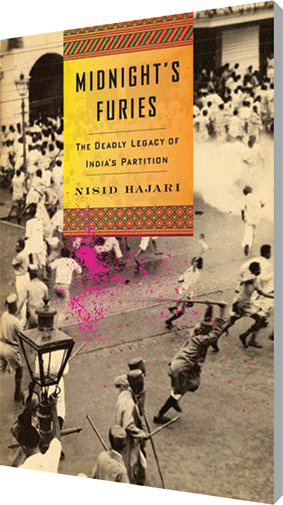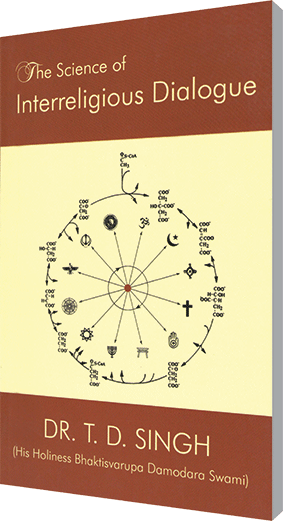The Raj At War: A People’s History of India’s second world war by Yasmin Khan bodley head; Price: Rs.2,022; Pages: 432
The Raj at War: People’s History of India’s Second World War by Yasmin Khan, associate professor of history at Oxford University and winner of the Royal Historical Society’s Gladstone Prize, 2007, is another magnum opus after her The Great Partition (2007).
History from below was the project of subaltern historians during the 1980s, which was a paradigm shift in the study of history itself, by giving due attention to excluded and marginalised voices and recognising their important contribution to our society. The Raj at War does not claim to be one such text but it is written on similar lines.
The Second World War changed the dynamics of international politics, toppling hegemonic colonisers from power and weakening their influence everywhere. It had equal consequences on the domestic politics of many would-be independent nations. The British Raj was at war from 1939 to 1945. Its colonies provided foot soldiers, princes provided financial support and all of British India was at war.
The heartwrenching narratives in The Raj at War suggests that the war brought misery to the Indian subcontinent, and innocent civilians suffered for the cause of liberation of Europeans from the Axis Powers. Khan’s claim that “Britain did not fight the Second World War, the British Empire did”, is on scrutiny throughout the book, consistently documented by the contribution non-expert civilians made to win the war for the Empire. Khan has highlighted the contribution of nurses, road builders, seamen, schoolgirls, Bengal famine victims, Nepalese, Burmese and Gorkhas.
Khan’s earlier book The Great Partition, which was about the creation of India and Pakistan, led her to probe the way war changed the fate of the Indian subcontinent. Before 1939, it wasn’t clear whether the mission of the Muslim League would be fulfilled, or even whether India would get her independence. For Jinnah, the war came as a “blessing in disguise”. It shaped the debate and paved the way for partition.
Midnight’s Furies: the deadly legacy of India’s partition by Nisid Hajari houghton mifflin; Price: Rs.1,419; Pages: 304
Midnight Furies by Nisid Hajari is a detailed account of India’s partition analysing the historicity of the event on both sides of the cartographic divide. Hajari gives a vivid account of how leaders of the Congress as well as Muslim League manoeuvred for their share in the power structure as well as for territorial division. Today’s communal politics, the unresolved Kashmir issue and the role of the RSS then and now, are all the fallout of partition. 
The demarcation of boundaries by Sir Cyrill Radcliffe was short sighted, and certainly not impartial. Sardar Patel’s role in the unification of the princely states through carrot-and-stick diplomacy was marred by the recalcitrancy of the Nizam of Hyderabad and the Nawab of Junagadh, and indecisiveness of the Maharajah of Kashmir. Patel’s soft attitude towards the RSS which was on the rampage in Punjab, Delhi, Bengal and Jammu showed their militant side during the partition. The inability of leaders from both sides to control the fury and killings is outlined in great detail.
This book is a departure from the other writing on partition in that it draws upon archives and primary accounts of journalists and reporters who covered the horrendous slaughter during the time. It is also visible throughout the book that violence was persistently used as a political tool for building pressure and strengthening the claims of both antagonists. Jinnah’s private life is given due attention in this book and his mulish attitude is also highlighted.
The titles of the chapters are interesting and catchy, from ‘Fury’ to ‘Madhouse’, ‘Pakistan Murdabad!’, ‘Stop This Madness’ and ‘Ad hoc Jihad’. The book provides a fresh perspective from a seasoned journalist, who justifies his arguments with historical methodology while maintaining an academic flavour.
The gruesome violence and retaliatory killings of innocent civilians, supervised by local leaders from both parties, is a recurring theme in this book. The role of Suhrawardy in the Calcutta killings has not been highlighted in history texts written in the past. The slaughter of Muslims on the outskirts of Delhi, especially in Gurgaon, also needs to be researched and documented. The murders in Patna, Noakhali, Jammu and Old Delhi by RSS volunteers and Sikh Jathas are facts which have been ignored in history texts which Hajari presents objectively. He reveals that Jammu, which is now considered a Hindu majority area was inhabited mostly by Muslims. More than 300,000 Muslims were killed by Hindu right wing groups and thousands migrated elsewhere.
After seven decades of partition, its bloody aftermath still haunts our memory, cropping up in debates and narratives of our history. The wrongs done during partition have ramifications even today. Communally polarised debates and politics, Hindu-Muslim riots and relations with our neighbour countries have put history to test. The militarised religious zones of India and Pakistan is another legacy of partition.
PARVEZ ALAM (The Book Review, May 2016)
Harmony prescription
The Science of Interreligious Dialogue by T.D. Singh bhaktivedanta institute; Price: Rs.125; Pages: 58
 The late T.D Singh (1937-2006) was a multi-talented personality. He was a scientist (with a Ph D in chemistry from the University of California), and simultaneously, a deeply spiritual person. For several years, he headed the Kolkata-based Bhaktivedanta Institute, which promotes dialogue between spirituality and science. A passionate peace activist, he was also a prolific writer.
The late T.D Singh (1937-2006) was a multi-talented personality. He was a scientist (with a Ph D in chemistry from the University of California), and simultaneously, a deeply spiritual person. For several years, he headed the Kolkata-based Bhaktivedanta Institute, which promotes dialogue between spirituality and science. A passionate peace activist, he was also a prolific writer.
In this timely book, Singh makes an impassioned plea for interfaith dialogue, calling on people of different religious persuasions to work together to face complex challenges of the contemporary world, including terrorism and the threat of a nuclear holocaust that could end all forms of life on Planet Earth.
For Singh, the prerequisite of interfaith dialogue and global peace and harmony is acknowledgement of One Supreme Being or God. As stressed in most spiritual traditions, true religion is rendering loving service unto Him, says Singh. Extracting the essence of all religions can help us develop compassion and discover that the message of love and mercy is common to all faiths. “The hope for global peace is within the grasp of those visionaries that can work to utilise this universal wisdom,” he writes.
Stressing the spiritual basis of this approach to interfaith dialogue, Singh writes that all human beings, irrespective of religion, are “eternal spiritual beings in temporary material bodies” and “the ultimate goal of human life is to achieve love of the Supreme Lord”. “Through spiritual education”, we should all rise to the consciousness that we are all pure spirit souls. In that consciousness, we can see the brotherhood and sisterhood of all people and that we are all spiritual children of God”. Far from this being a departure from established scriptures, all genuine religious traditions, Singh writes, teach us to love God in brotherhood.
“If this was truly practised by every religious person in each tradition, he or she would never fight with anyone in the name of God,” he preaches. The message of this book is that there is an underlying unity of all creeds and faiths and discovering it clears the path for universal peace, co-existence and harmony.
Singh’s approach to interfaith dialogue as a spiritual task is of special significance. According to this perspective, God is the foundation of reality. God, Singh says, has created humans for the purpose of spiritual evolution, for them to rise from lower to higher levels of consciousness. Accordingly, the formula for lasting peace between people of different religious traditions must necessarily be rooted in spirituality. What we need, he says, is “a culture of partnership among different religious communities”.
Singh asserts that the only option for our collective survival is to promote understanding, peace and harmony between individuals, communities and nations, and this should be based on a spiritual foundation. The root cause of sectarian strife, terrorism and the threat of deadly wars that can put the very survival of humanity at stake, he argues, is a rising deficit of spirituality and knowledge of God.
The importance of this book is the context in which it is written. The world over, religious particularistic movements seeking to divide people on the basis of religious identities are on the rise, fomenting conflict. Against this backdrop, this book, which suggests ways and means to work towards global peace and harmony through interreligious dialogue, has an important message for everyone.
SU NIYE

























